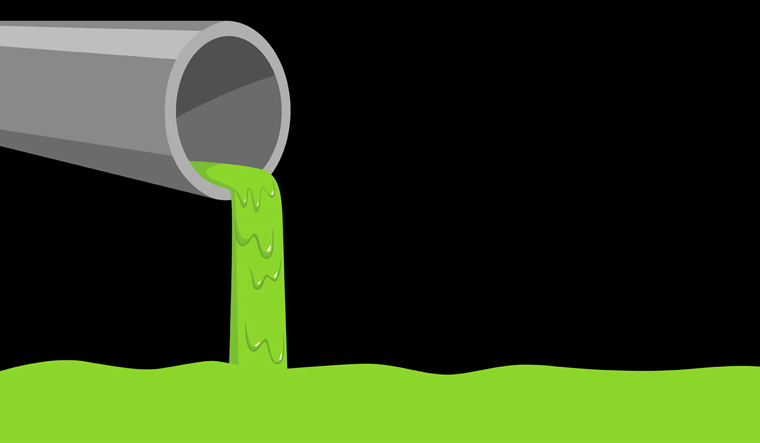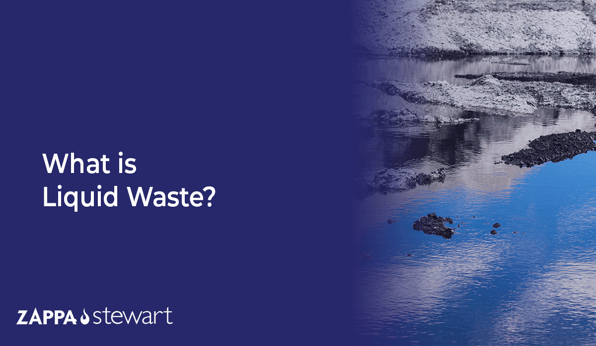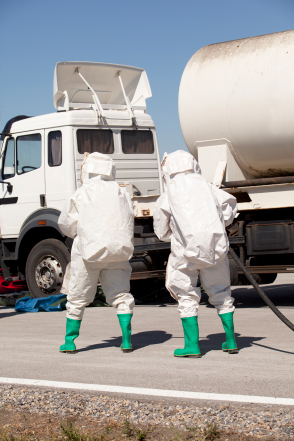Leading Industrial Wastewater Treatment Solutions: Guaranteeing Conformity and Effectiveness
Leading Industrial Wastewater Treatment Solutions: Guaranteeing Conformity and Effectiveness
Blog Article
Exactly How Fluid Waste Disposal Functions: A Detailed Summary of Strategies and Technologies Employed

Overview of Fluid Waste Kind
The complexity of fluid waste types demands a complete understanding of their attributes and effects for disposal. Liquid waste can extensively be classified into numerous types, consisting of industrial, metropolitan, agricultural, and contaminated materials. Each classification exhibits distinctive properties, calling for particular monitoring strategies to alleviate environmental and health threats.
Industrial liquid waste originates from manufacturing processes and usually has an array of impurities, such as hefty steels, solvents, and natural substances. Community liquid waste, mostly comprising wastewater from houses and industrial facilities, consists of raw material, nutrients, and virus (industrial wastewater treatment). Agricultural liquid waste, consisting of overflow from farms, might consist of plant foods, chemicals, and pet waste, presenting dangers to water top quality and ecological communities
Harmful liquid waste is characterized by its poisoning, reactivity, or possible to trigger injury. Understanding these diverse fluid waste kinds is important for creating reliable disposal methods and making certain conformity with ecological policies.
Physical Treatment Approaches

Testing is the preliminary step, where larger fragments and particles are eliminated from the fluid waste making use of displays or grates. In sedimentation storage tanks, larger bits settle at the bottom, creating a sludge layer, while the made clear fluid can be more dealt with.
Filtration is an additional essential technique that includes passing the liquid with permeable materials, such as sand or membranes, to record smaller sized fragments. This step enhances the quality of the fluid, making it suitable for succeeding therapy procedures.

Chemical Therapy Methods
Chemical treatment techniques are necessary for efficiently managing liquid waste, specifically in addressing dissolved and colloidal impurities that physical methods may not properly remove. These techniques utilize different chemical agents to counteract, speed up, or change hazardous substances into less damaging types.
One typical method is coagulation and flocculation, where chemicals such as alum or ferric chloride are included in promote the aggregation of suspended particles. This procedure boosts sedimentation, allowing for much easier elimination of the resulting sludge. In addition, oxidation processes, utilizing representatives like chlorine or ozone, are employed to break down intricate natural substances and virus, rendering the waste safer for discharge or further their explanation therapy.
Neutralization is one more critical method, which changes the pH of acidic or alkaline waste streams to neutral degrees, protecting against possible harm to downstream systems and the environment. Moreover, progressed oxidation procedures (AOPs) make use of combinations of oxidants and ultraviolet light to weaken consistent contaminants, accomplishing a higher degree of treatment effectiveness.
Biological Therapy Procedures
Organic therapy procedures play a critical role in the administration of fluid waste by utilizing microorganisms to disintegrate organic matter and minimize pollutant degrees. These processes can be generally classified right into anaerobic and aerobic treatments, each utilizing details microbial communities to attain effective waste deterioration.
Cardio therapy includes making use of oxygen to help with the malfunction of natural materials by germs. This process is frequently carried out in turned on sludge systems, where oygenation storage tanks provide a favorable environment for microbial development, causing the oxidation of natural pollutants. The resultant biomass can be separated from treated effluent via sedimentation.
In contrast, anaerobic therapy occurs in the lack of oxygen, depending on different microorganisms to damage down natural issue. This technique is specifically helpful for high-strength waste, as it produces biogas, a renewable resource resource, while minimizing sludge production. Technologies such as anaerobic digesters are regularly employed in municipal and commercial applications.
Both anaerobic and aerobic organic therapies not just lessen the environmental effect of fluid waste but additionally help with resource healing, making them essential parts of lasting waste monitoring methods. Their efficiency, versatility, and effectiveness sustain their prevalent implementation across various markets.
Arising Technologies in Disposal
Innovative approaches to liquid garbage disposal are rapidly progressing, driven by improvements in technology and a boosting emphasis on sustainability. Amongst these arising modern technologies, membrane layer bioreactors (MBRs) have acquired grip for their capability to combine organic treatment with membrane purification, resulting in high-quality effluent that can be recycled in different applications. MBRs allow smaller footprints and more reliable procedures contrasted to conventional systems.
One more appealing growth is using anaerobic digestion incorporated with nutrient healing technologies, which not just deals with fluid waste but likewise generates biogas and recoups valuable nutrients like nitrogen and phosphorus. This dual advantage boosts resource performance and lowers environmental effect.
Additionally, advanced click for info oxidation processes (AOPs) are being embraced for the deterioration of complex organic pollutants. These methods utilize effective oxidants and stimulants to damage down contaminants at the molecular level, offering an extremely reliable option for Going Here tough waste streams.
In addition, the assimilation of synthetic intelligence and equipment knowing in waste monitoring systems is optimizing functional performance and anticipating maintenance, bring about decreased prices and improved environmental compliance. These modern technologies reflect a significant change towards more effective and sustainable fluid garbage disposal techniques.
Conclusion
To conclude, reliable liquid waste disposal demands an extensive understanding of numerous techniques and technologies. The combination of physical, chemical, and organic treatment methods guarantees the reliable monitoring of varied waste kinds. In addition, the development of innovative technologies boosts therapy efficacy and promotes sustainability in waste administration methods. By constantly advancing these techniques, it comes to be feasible to resolve the expanding difficulties connected with fluid waste, ultimately contributing to environmental protection and source recuperation.
Liquid waste disposal is an important facet of environmental management, requiring a thorough understanding of different strategies and innovations tailored to various waste kinds. Fluid waste can extensively be categorized right into several types, consisting of industrial, municipal, agricultural, and hazardous waste. Agricultural liquid waste, including runoff from ranches, might contain plant foods, pesticides, and animal waste, posturing risks to water quality and ecological communities.
Numerous physical treatment techniques play a vital role in taking care of fluid waste properly - industrial wastewater treatment.In verdict, effective liquid waste disposal requires a thorough understanding of numerous strategies and modern technologies
Report this page